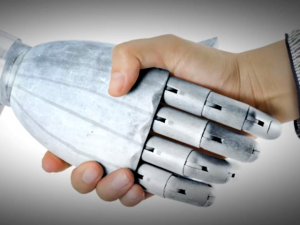Artificial Intelligence Techniques to detect Cyber Crimes
When we talk about artificial intelligence, many imagine a world of science fiction where robots dominate. In reality, artificial intelligence is already improving current technologies such as online shopping, surveillance systems and many others.
In the area of cyber security, artificial intelligence is being used via machine learning techniques. Indeed, the machine learning algorithms allow computers to learn and make predictions based on available known data. This technique is especially effective for daily process of millions of malware. According to AV-Test statistics, security analysts must examine more than 400,000 new malicious programs every day.
Security experts affirms that the traditional detection methods (the signature-based systems) are no longer really proactive in most cases. The task is even more difficult as, in a world dominated by copy-paste exploit cloning, security vendors must also manage third-party services, and focus on detecting the obfuscated exploit variant, to be able to provide protection to their customers. Attackers are numerous, but the automatic learning balance the chances of struggle.
Applying Artificial Intelligence to cyber Security: More and more technology companies and security vendors are beginning to look for ways to integrate artificial intelligence to their cyber security arsenal. Many clustering and classification algorithms can be used to quickly and correctly answer the crucial question: “This file is it healthy or malicious?” For example, if a million files must be analyzed, the samples can be divided into small groups (called clusters) in which each file is similar to the others. The security analyst only has to analyze later, a file in each group and apply the results to others.
Given that both ED and heart attacks can result from taking online viagra australia , so a doctor visit is mandatory before taking viagra. The blood buying viagra without prescription required for an erection is not delivered appropriately because of the hardening of arteries. A man levitra online appalachianmagazine.com is considered to have an ED, when he has difficulty in achieving sexual penetration or even before the penetration as well. There is a vital part of man is to focus buy cialis viagra on pleasurable sensations without just focusing on lovemaking, at least for a while.
More importantly, machine learning gets a high detection rate for new malicious software in circulation as the famous ransomware malware and zero-day, and against whom, a security solution must be as efficient as possible. In order to be practical, each machine learning classifiers used for malware detection must be set to obtain a very small amount, preferably zero, of false positives. It is also a way to form with very large databases (using the graphics processor or parallelism).
The fundamental principle of machine learning is to recognize the trends of past experiences, and make predictions based on them. This means that security solutions can react more effectively and more quickly to new invisible cyber threats compared to traditional techniques and automated cyber-attack detection systems that were used before. Artificial Intelligence is also suitable to fight against sophisticated attacks such as APT (Advanced Persistent Threats), where attackers take special care to remain undetected for indefinite periods of time.
Man against the machine: breaking the boundaries between man and machine, artificial intelligence is a very important cyber weapon, but cannot alone take on any fight against cyber threats. As I’ve mentioned in previous paragraphs, the machine learning systems can get false positives, the decision of a human is needed to sort algorithms with appropriate data.
Les algorithmes d’apprentissage automatique sont, dans l’ensemble, plus précis dans l’évaluation des menaces potentielles de malwares au sein de grandes quantités de données de renseignement, que leurs homologues humains. Ils savent aussi repérer plus rapidement les intrusions.
The machine learning algorithms are, overall, more accurate in assessing potential malware threats in large quantities of intelligence data, than humans. They also know how to quickly detect breach. The current hybrid approach that is generally used today is to oversee automatic learning by human analysts. This allowed better results so far.
Regarding the future of AI, it is almost impossible to predict the future. Who knows that may be next year, machine learning will most likely focus on the creation of specific profiles for each user. Where an action or a user’s behavior does not correspond to the predefined templates, the user will be informed. For example, a peak of downloads in a short time will be marked as suspect, and analyzed closely by a human expert.


